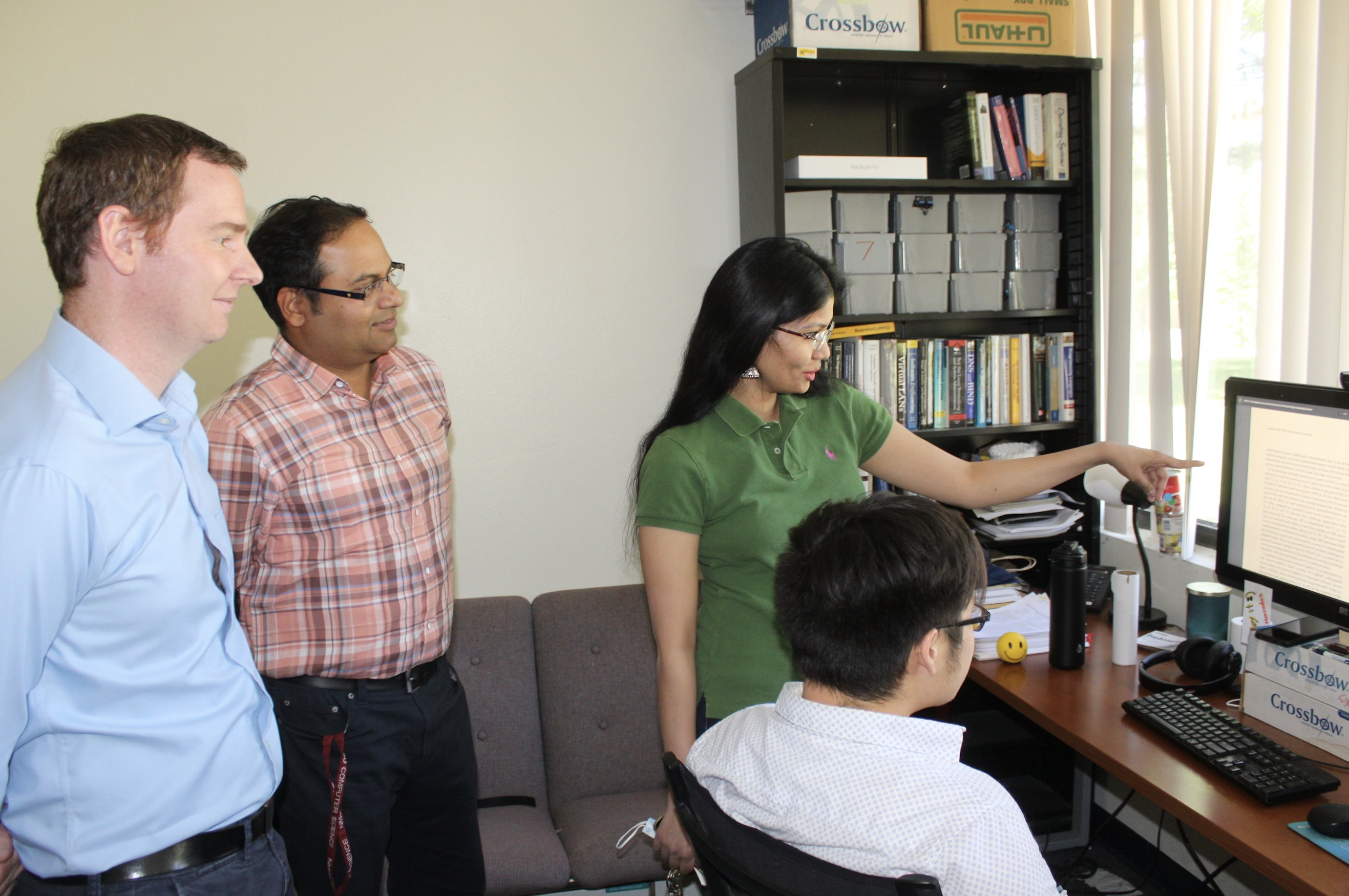
New Mexico State University is leading one of the 37 projects funded by a partnership led by the National Science Foundation containing two other government agencies and several high-profile corporations in what the NSF calls its “single largest effort to date to engage public and private partners to jointly support a research program.” NMSU is part of a select group that includes universities, such as Princeton, Yale and MIT.
The $37 million investment in the public-private partnership is called the Resilient and Intelligent Next Generation Systems (RINGS) program. RINGS will focus on accelerating research in the areas of wireless and mobile communication, networking, sensing, computing systems and global-scale services. Private sector partners include Apple, Ericsson, Google, IBM, Intel, Microsoft, Nokia, Qualcomm and VMware.
Satyajayant “Jay” Misra, NMSU computer science professor and director of the cybersecurity bachelor’s degree program, is the principal investigator of NMSU’s project titled “RINGS: Resilient Edge Ecosystem for Collaborative and Trustworthy Disaster Response (REsCue).”
NMSU is the lead university for the three-year, $1million NSF-awarded project in collaboration with the University of Missouri-Saint Louis and Saint Louis University.
“The big part of this is that there are two government agencies and 12 companies that will be partnering with universities on these projects,” Misra said. “Getting funded means the participating companies have actually looked at our proposal and said what we are doing is not only cutting-edge science but it has real world implications.”
Misra and his co-principal investigators Roopa Vishwanathan, NMSU computer science assistant professor; David Mitchell, NMSU electrical engineering assistant professor; Abderrahmen Mtibaa and Reza Tourani, assistant professors at the University of Missouri-Saint Louis and Saint Louis University, respectively, are addressing networking and security challenges in next generation public safety and disaster response networks. These are networks where mission-critical emergency operations such as search and rescue must succeed despite limited surviving communication infrastructure, potentially augmented with diverse devices deployed by first responders.
“We are trying to propose an architecture to build a network of communication networks that can work together in an emergency to enable necessary communications,” Misra said. “You have some homes after a disaster that have power and you have some businesses that have networks that are still functional, but separately you cannot use them. Wouldn’t it be nice if you could actually bring all of these assets together and deploy them for operation during or after a disaster?”
Mitchell is part of the Communications and Signal Processing group in electrical and computer engineering. His goal is to try to connect the fragments of operating networks where they can function together with a greater capacity than the sum of their parts.
“I will be investigating techniques to provide ultra-reliable, high-speed, wireless communications in disaster response networks. This is particularly challenging since many of the conventional capabilities and protocols of current networks, for example 5G cellular networks, will be unavailable with limited surviving infrastructure.”
Combining functional networks can create a communication grid to help rescuers continue their mission-critical activities during a disaster. But it’s not just about helping them communicate with one another, it is also about making these networks safe to use.
This is where Vishwanathan’s expertise in cryptography comes in.
“My role in this project is to explore applications of cryptographic protocols to design secure disaster response systems,” Vishwanathan said. “We will be exploring various cryptographic protocols, ranging from simple public key encryption to more advanced protocols such as attribute-based cryptosystems.”
Rescue operations during a disaster can only be effective if the fundamental security and trust needs of accompanying information exchanges are addressed. This is the goal of the NMSU RINGS project.
Misra explained with a scenario: “How do you actually create a trust framework so that you know when people are coming to rescue you that they are actually first responders and not somebody planning to rob your house? You build a global or a decentralized trust framework in that whole region so that when rescue operation happens and the responder delivers me to the hospital, it is input to the system that I was rescued correctly, or alternatively that no one showed up, or something worse happened.
“You need to build an ecosystem where there are checks and balances,” Misra said. “One of the ways we want to employ checks and balances is through the concept of micro-transactions that provide cumulative proof that an action was taken or not. So, if you can add these building blocks into the system, even in an untrusted environment, people can interact with each other and feel safe about it. That is the intent of this project.”
The result, according to the team’s proposal, will be a generic blueprint to design an edge-centric, trustworthy and resilient networking architecture that engenders trust without a centralized certificate authority in a network stitched-together from independent network fragments. The architecture will provide flexible and revocable access control and authorization for data and services and ultra-reliable, high-speed wireless communications in challenging environments.
The use of such disruption-tolerant networks may extend beyond effective disaster and emergency responses to other applications such as rural networking, autonomous driving, edge computing and distributed manufacturing.
The NMSU project’s research objectives also include contributions to a diverse workforce through recruitment and training of a diverse student population.
